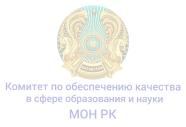CRITICAL INTERPRETATIONS OF «THE CHRYSANTHEMUM AND THE SWORD» BY RUTH BENEDICT
DOI:
How to Cite
Abstract
The article introduces the history of the formation of the critical tradition in the assessment of “The Chrysanthemum and the Sword” by R. Benedict, one of the most famous book in Japanese studies. Today, the articles of the author’s Japanese contemporaries, who pointed out the lack of historicism in her methodology, are recognized as objective. Many researchers agree that in the book of R. Benedict the main discourses of the concept of the uniqueness of the Japanese, nihojinron, which arose in the 70s of the twentieth century, were formed. R. Benedict’s approach to describing Japan traces the traditions of Orientalism, which were in demand in the absence of methods for studying modern Eastern cultures in Western anthropology. The phenomenon of “The Chrysanthemum and the Sword” is indicative of many current studies: the theory of nation-building, postcolonial theory, the theory of modernization and the plurality of modernity.
Key words: Ruth Benedict, nihojinron, modernization of Japan, orientalism, westernization, primordialism, nation-building.








